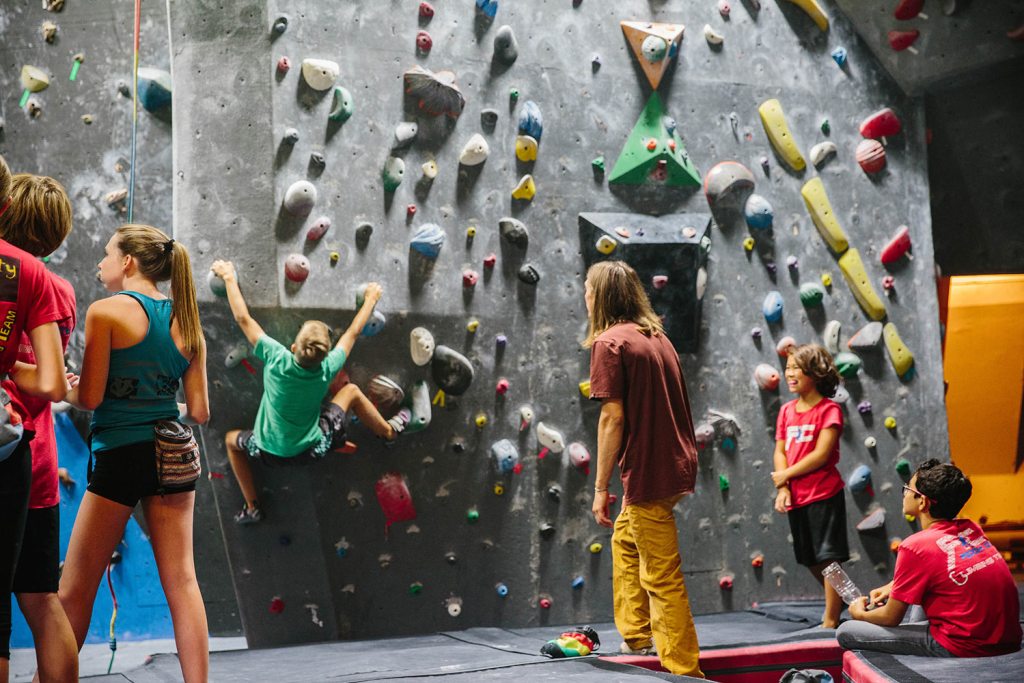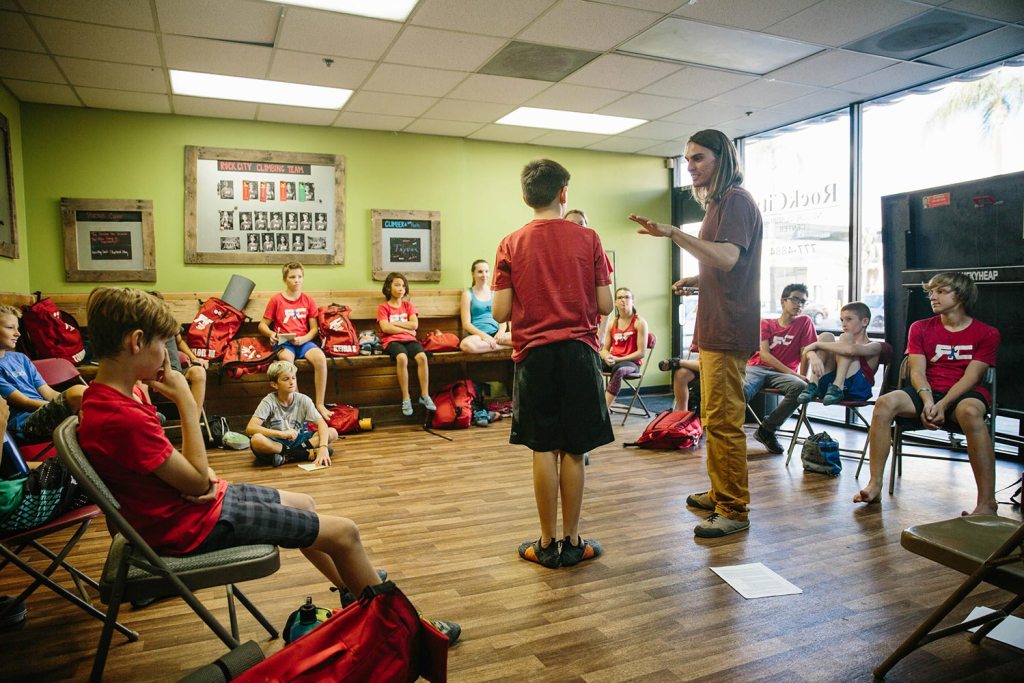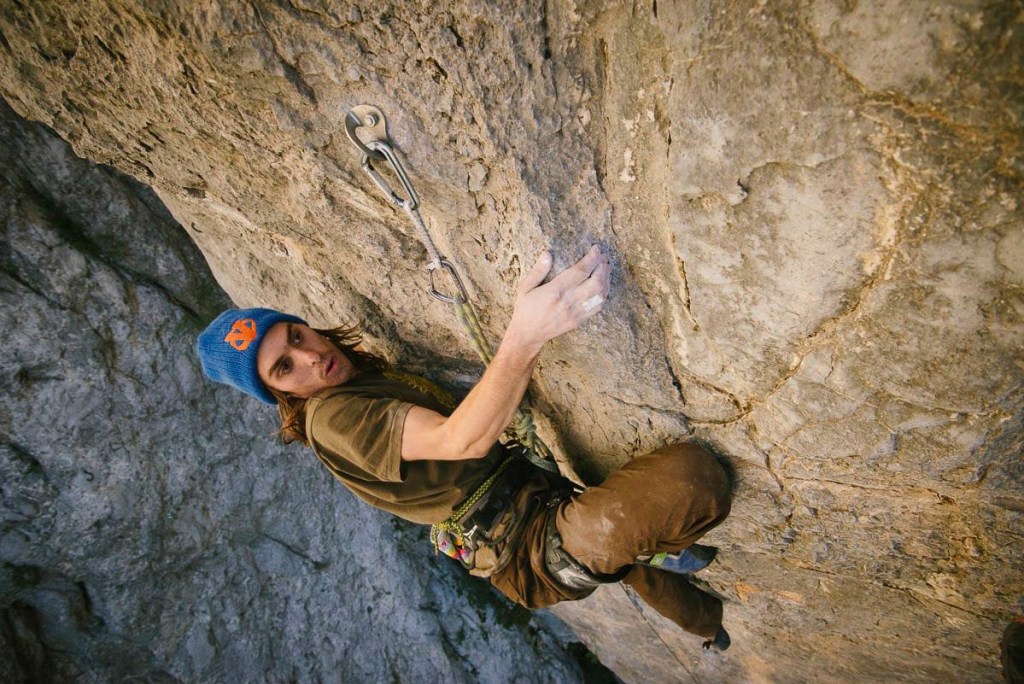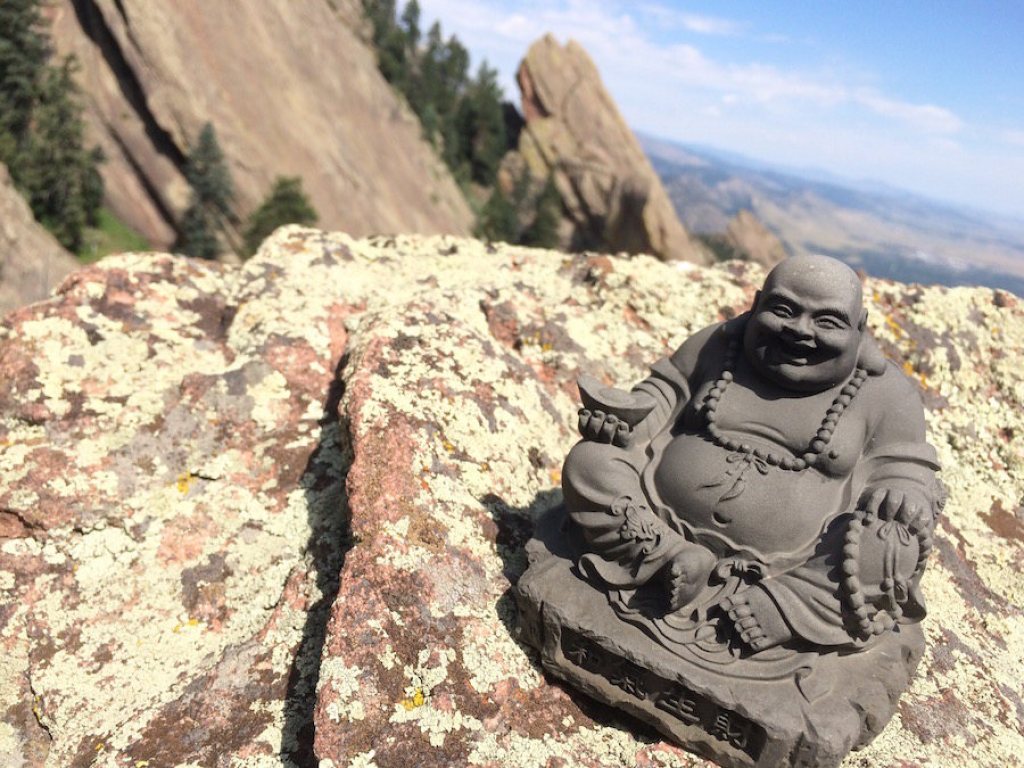Simple actionable steps to help you send your project
We train physically all of the time for our climbing goals. We do it to strengthen our bodies for the challenge of moving up the faces we climb. So why don’t we pay equal attention to training our minds?
Your mind holds the capability to tear you apart or allow you to succeed; one of the hardest aspects of climbing is how you deal with fear and failure. Your mind can race, sapping you of your focus. When this happens, it’s time to incorporate a bit of mindfulness into how you approach climbing. Here are some of the keys to building a strong, confident, and aware mental game.

A youth climbing team member employs the energizing breath.
Breathe
We hear climbers tell each other to breathe all the time, but what does it actually mean?
Breathing is perhaps the simplest, yet most overlooked, way to take control of our mental game. We all constantly breathe without having to think about it. It’s an involuntary action tied to our survival. Breathing, however, is one of the few bodily functions that can also be voluntary. We can consciously breathe and use that conscious breath to adjust and influence our performance.
Feeling lethargic? Feel like you need an extra boost to stick that powerful move? Use what I call the energizing breath. The energizing breath is the perfect way to power you through the crux—or whenever you feel you need an extra boost.
How to Use the Energizing Breath
- Inhale completely through your nose and exhale normally out your mouth.
- Inhale through your mouth, and exhale in three short, forced, quick exhales.
- Inhale through your mouth again. This time exhale in two short, forced, quick exhales.
- Inhale through your mouth again. Now, exhale once, quickly short and forced.
- Breathe normally for a second.
Repeat 2x.
It’s important to breathe normally for a bit after you try this exercise to avoid feeling lightheaded. Ultimately, you should feel more alert. Your heart rate may be a bit elevated too, and that’s good. This exercise works to pump more blood through your veins and rapidly get oxygen into your system to boost your energy.

Paul Teaches Internal Dialogue Techniques to a Youth Climbing Team.
Develop Positive Internal Dialogue
Internal dialogue is made up of everything you say to yourself inside your head, your thoughts. When you have the same thought over and over, you ingrain that thought so deeply into your mind that it becomes a belief. If you think you’re only a V2 climber, repeating that in your internal dialogue makes it a belief.
But just like your breathing, you can influence your emotional wellbeing through what you say to yourself, helping you gain the extra bit of confidence or motivation you need to send. I’m not talking about false positive thinking. Telling yourself you’re a V12 climber won’t make it true. But you can use language that is intentional and actionable. Start by identifying the words and phrases that stress you out and those that motivate you.
Three Key Questions to Create a Positive Internal Dialogue:
- Which words or phrases are your power words? When you hear these phrases, it should help you focus all of your attention on what you’re doing and make you feel empowered. It can be anything. Identify them or create them.
- Which words stress you out in scary situations? Knowing these words allows you to communicate them to other people so they know what helps you when you’re trying to send.
- Which words or phrases relax you in stressful situations? Identify them or create them.
Once you have identified these words, you can share them with your climbing partners so that you can create supportive situations. If you and your partner know what words motivate each of you, you can use them when one of you experiences stress or fear. The same goes for those words that stress you out. Once you know them, you can share them with your partner so they know what not to say in challenging situations. This creates a better partnership. The more true intention and personal reflection that’s put behind these answers, the better they’ll help cultivate the confidence and energy you need to get through your projects.

Paul eyes his next hold on Potrero Chico’s Cyclops (5.13a)
Use Pinpoint Focus
There are a lot of metacognitive techniques and theories around mental training, but I prefer actionable tools that will help you stay focused in the present moment. After all, the only way to do that next move is to look at it and do it in the present moment, right?
Pinpoint focus works like this: At the base of your climb, find a solitary point. It can be a single crystal in that granite boulder, the color spec of the hold in the gym, the foot jib, or whatever. Find that small, minute detail and focus your eyes and all of your attention on it. Try to see every aspect possible in that tiny speck. Focus. Then, gently put your fingers and hands on the start holds or part of the rock. Don’t grip down, but become aware of the space in which your fingertips touch the rock. Get into the detail, and try to feel the space between the rock and your fingertips. Close your eyes and breathe deeply three times. Visualize the pinpoint. Feel your preparedness and acknowledge inwardly everything you’ve done and climbed to get to this point. When you’re ready, open your eyes, and climb.
As you climb, only allow your eyes to look at the holds you need to reach (task-relevant eye targets). Looking down at your dog or partner isn’t going to help you send. Focus on where you’re going. Look intentionally for your feet and place them with purpose. Breathe into the next move and continue on your journey.

